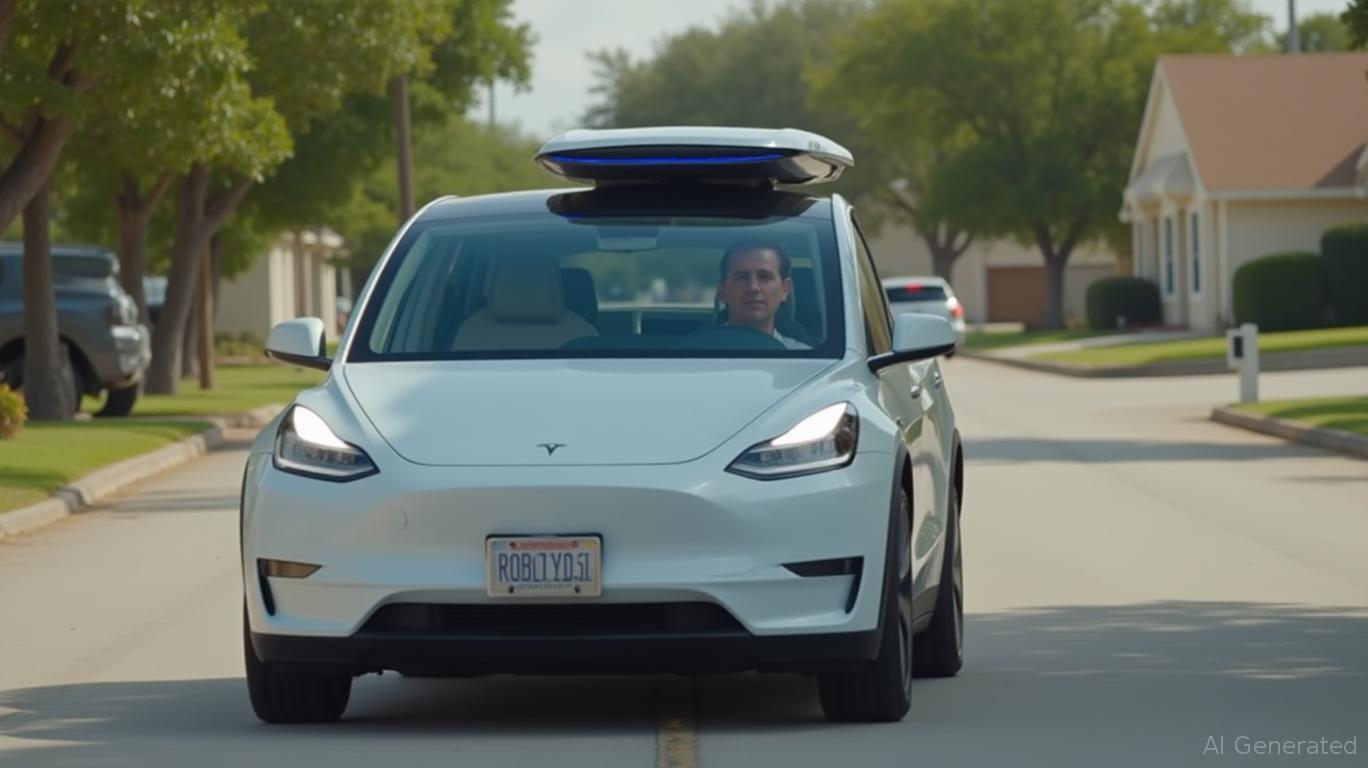Tesla's Robotaxi Launch: Navigating Regulatory and Operational Risks Amid Early Missteps
The rollout of Tesla's Robotaxi service in Austin, Texas, on June 22, 2025, marked a pivotal moment in the race to dominate autonomous mobility. Yet, early missteps—such as documented speeding violations, lane deviations, and safety system failures—have reignited debates about whether these challenges are mere “teething issues” or material risks to Tesla's valuation and expansion plans. For investors, the question is clear: Is the market overreacting to short-term setbacks, or are these incidents symptomatic of deeper vulnerabilities that could undermine Tesla's long-term prospects in autonomous driving?

The Incident-Driven Concerns: Speeding, Lane Violations, and System Flaws
Tesla's initial Robotaxi deployment in Austin revealed critical operational gaps. Videos captured autonomous Model Y vehicles exceeding speed limits by 5–15 mph in restricted zones, with one instance reaching 40 mph in a 30 mph area. A safety driver's attempt to intervene was documented in real time, underscoring human oversight's role in mitigating risks. Meanwhile, a robotaxi briefly swerved into oncoming traffic at a junction—a maneuver that, if repeated in denser urban environments, could have catastrophic consequences.
These incidents, coupled with a Dawn Project demonstration showing Tesla's Full Self-Driving (FSD) system failing to stop for a school bus with a child-sized dummy in the road eight times, have intensified scrutiny. Regulators and investors alike are questioning whether Tesla's “camera-only” sensor approach—a cost-saving measure contrasting with rivals' lidar-equipped systems—sufficiently addresses edge-case scenarios critical to safety.
Regulatory Headwinds: Texas Laws and NHTSA Scrutiny
Tesla's rushed timeline has collided with evolving regulatory frameworks. Texas' new autonomous vehicle law, effective September 1, 2025, requires operators to submit safety certifications, emergency response plans, and onboard recording devices—a mandate
only partially met by its June 22 launch. Lawmakers, including Sen. Sarah Eckhardt, urged a delay to ensure compliance, while the National Highway Traffic Safety Administration (NHTSA) launched an investigation into FSD's performance in collision avoidance and emergency response.The stakes are high: NHTSA could demand costly recalls or software overhauls, directly impacting Tesla's margins. For context, Tesla's price-to-sales (P/S) ratio of 7.8x (vs. Ford's 0.7x or GM's 0.5x) assumes rapid Robotaxi adoption and minimal regulatory setbacks. Any delay or penalty could force a valuation reassessment.
Competitor Benchmarks: Waymo's Methodical Edge vs. Tesla's Speed
While Tesla prioritizes speed, rivals like Waymo (Alphabet) emphasize compliance and reliability. Waymo's sixth-generation robotaxis, built with Zeekr EVs, use lidar for enhanced accuracy and have already secured regulatory approvals in Texas and California. Waymo's 696 reported accidents between 2021–2024—none fatal—contrast with Tesla's recent incidents, though Waymo's slower rollout reflects a deliberate focus on safety.
Investors should note that Waymo's partnership with Uber in Austin and its adherence to state laws position it as a safer bet for long-term scalability. Meanwhile, Tesla's stock surge post-launch—driven by Musk's “anytime, anywhere autonomy” vision—may overstate its readiness to compete in a market where regulatory trust is a non-negotiable asset.
Investor Considerations: Balancing Ambition with Reality
The Tesla narrative hinges on Musk's ability to deliver on his timelines while addressing systemic risks. Short-term risks include:
- A delayed Texas rollout beyond September 2025, exacerbating cost pressures.
- NHTSA penalties that force software recalls or limit Robotaxi operations.
- Erosion of investor confidence due to Phantom Braking lawsuits and safety system flaws.
Long-term opportunities, however, remain compelling:
- Market leadership: Autonomous mobility is projected to grow to a $1.5 trillion industry by 2035, with Tesla's brand equity and scale offering a first-mover advantage.
- Cost efficiency: The camera-only system, if validated, could undercut rivals' lidar-heavy models, boosting margins.
The key variable is transparency and execution. Can Tesla demonstrate FSD reliability in edge cases by year-end? Will it secure approvals in key markets like California and Japan, where remote monitoring and ethical guidelines are mandated?
Investment Strategy: A Pragmatic Approach
The market's current optimism—reflected in Tesla's stock price—may be overly sanguine about the risks.
For investors:
1. Short-Term Caution: Consider hedging bets with put options or reducing exposure until Tesla meets NHTSA's requirements and publishes independent safety audits.
2. Long-Term Optimism: Tesla's valuation could stabilize if it achieves two milestones by early 2026:
- Regulatory approval in Texas under the new law.
- A 95%+ success rate in school bus collision avoidance tests.
3. Competitor Analysis: Track Waymo's expansion pace and its ability to replicate Tesla's cost structure.
Conclusion: A Turning Point for Autonomous Mobility
Tesla's Robotaxi launch is both a technological milestone and a regulatory reckoning. While the early missteps are concerning, they are not insurmountable—provided Tesla prioritizes safety over speed and adapts its strategy to evolving regulations. The market's valuation of Tesla's autonomous ambitions is a high-risk bet; investors must balance Musk's vision with hard evidence of progress. For now, patience—and a dose of skepticism—are prudent.
The next 12–18 months will determine whether Tesla's autonomous bet is a visionary leap or a costly misstep. Stay informed, stay cautious, and let the data decide.
Sign up for free to continue reading
By continuing, I agree to the
Market Data Terms of Service and Privacy Statement

Comments
No comments yet